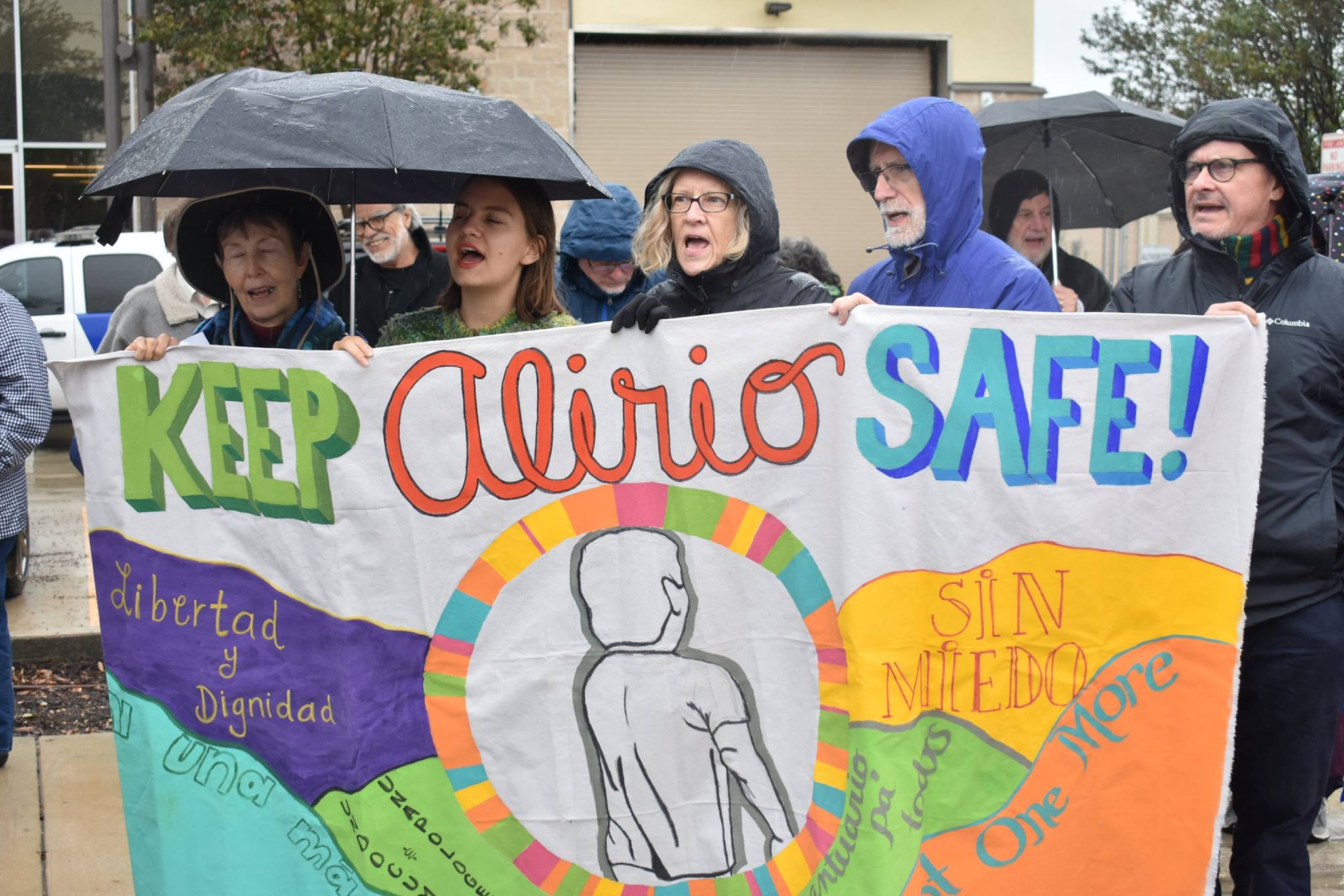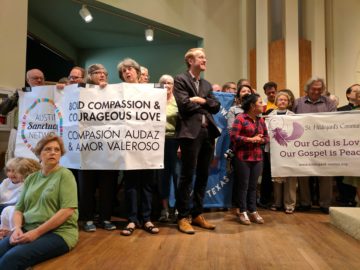
Salvadoran Man Seeks ‘Sanctuary’ from Deportation in Austin Church
At least 800 churches across the U.S. have joined a movement to shield immigrants from removal.


Rather than submit to Trump’s deportation machine, Alirio Gámez went to church. On Tuesday, the 40-year-old Salvadoran announced to a group of faith leaders, elected officials and activists that he had decided to live inside Austin’s First Unitarian Universalist Church until his pending expulsion is halted.
“I have the right to live and to have my life respected,” Gámez proclaimed from the church’s large wooden dais during a press conference announcing his decision. “That’s why I’m asking this government to please stop my deportation.”
In 2015, Gámez fled El Salvador, Latin America’s second-deadliest country, but in May his application for refugee status was denied — a fate shared by 83 percent of his compatriots. That’s when he met an organizer with the Austin Sanctuary Network — a coalition of more than 20 churches and nonprofits — who told him about “sanctuary,” a strategy that takes advantage of a long-standing Immigration and Customs Enforcement (ICE) policy of avoiding certain “sensitive locations.”
The sanctuary movement’s roots reach back to the 1980s when men and women of the cloth helped smuggle refugees fleeing Central America’s civil wars into the United States. Under Trump, the movement has spread like wildfire among America’s lefty congregations: The number of churches willing to harbor immigrants in defiance of the federal government has quadrupled to more than 800 since November.
“The day I did a service where I preached about [sanctuary] and introduced Alirio, people were in tears; they gave him a standing ovation,” said Reverend Chris Jimmerson, minister at First Unitarian. “It’s church members feeling like this is real, we’re really living our values and our mission.”

Jimmerson’s church also gave sanctuary in 2015 to Sulma Franco, a Guatemalan LGBT activist who won relief from deportation and later obtained a visa that makes her eligible for a green card. Gámez moved into Franco’s old room.
Nationwide, around 20 immigrants are openly living in churches, but that’s not the whole picture, said the Rev. Noel Andersen with the Church World Service. Andersen said that under Trump an increasing number of immigrants are taking sanctuary in secret. “There’s more fear now about having your story go public than there was during the Obama administration,” he said.
Trump’s scattershot approach to immigration enforcement also hobbles the movement’s basic strategy. Immigrants in sanctuary typically seek what’s called a “stay of removal” — an ICE decision to postpone deportation for those who pose no security threat. Such stays allow immigrants to pursue alternative forms of legal status, but these days, they’re “much more difficult” to get, said Andersen.
But as long as ICE regards churches as off-limits, congregations can still shield immigrants. And activists are finding creative ways to win: In May, two Mexican immigrants in Denver received stays after a U.S. senator introduced legislation on their behalf.
For Gámez, the Austin Sanctuary Network plans to recruit elected officials to the cause and pressure ICE’s San Antonio field office through calls, petitions and personal visits, according to organizer Alejandro Caceres.
Asked whether he thought they’d succeed, Gámez merely replied: “We’re gonna fight.”


